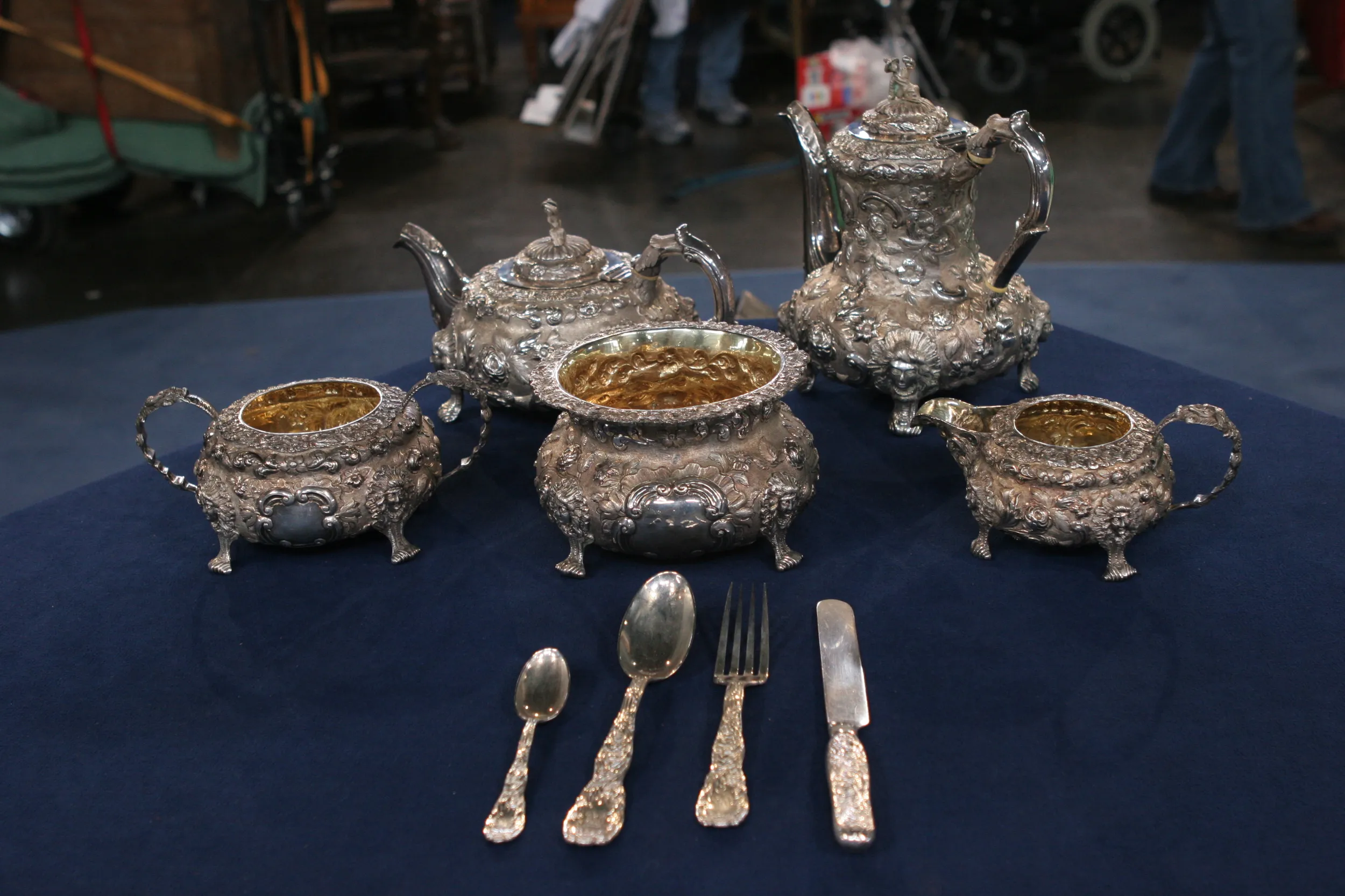GUEST: I brought some silver. I brought a number of place settings of this flatware and then this tea service. My grandfather was a collector and had a small shop in Newport, Rhode Island, until his death about 20 years ago. When he died, my brother and I inherited his stuff.
APPRAISER: And did he bring any of this stuff home for you to use? Or your grandmother to use? Or was he just hoarding it in the shop?
GUEST: It was everywhere, actually. It was in the shop, it was in the house. The house was full of stuff so that you could really only get from one room to the other by these small paths through boxes and piles of stuff. And he had a lot of stuff in the shop, too. His shop was, I think, mostly a place where he would go and escape my grandmother and where he could smoke his cigars and sit in front of a little pot belly stove with his buddies, who also collected a little bit in Newport.
APPRAISER: Oh, terrific. Well, when I saw this flower pattern, I thought, wow, this is great. I love this pattern so much. It's the Tiffany Chrysanthemum pattern. And it came out in 1880. And it's so heavy. Have you ever used it at all? At dinner parties?
GUEST: Yeah, we've used it Thanksgiving and Christmas.
APPRAISER: You have about 70 pieces in all. This was made between 1875 and 1891. And you can tell that because it has the capital "M" here. And the "M" stands for Edward C. Moore, who was president during that time. So every time there was a different president, they used his initial, and that helps you date Tiffany silver.
GUEST: Wow.
APPRAISER: But the early stuff is so much heavier than the stuff they sell today. The Chrysanthemum pattern was extremely successful, and they still make it today. You can really tell just by lifting if it's an old or a new set. Now, the tea and coffee set, did you ever use this at home?
GUEST: No, this has been in a box in front of the television for as long as I can remember with magazines sitting on top of it.
APPRAISER: Really? Okay, well, the set is English, it's Victorian. It's by William Hunter, London, 1841. And it's just so elaborate. The decoration includes flowers, foliage, shell work, female masks. Did you ever clean this?
GUEST: I never did.
APPRAISER: I see it's got a little bit of green, some corrosion. So I don't know what's happening there. You may want to take that to a silversmith so it doesn't get any worse. It has a little bit of a condition problem with a loose handle here, but again, the silversmith should be able to take care of that without spending a lot of your money.
GUEST: Mm-hmm.
APPRAISER: It's fully marked on the bottom. It's got the maker's mark, the date letter, this mark for London and the mark for sterling. Starting with the flatware service, this set of 70 pieces of this date of Tiffany Chrysanthemum would bring about $4,000 to $6,000 at auction. It's like an average of about $60 a piece. It's highly sought after, and your set is not very complete, so somebody who buys it probably is somebody who already has the set and wants more of it. And this is monogrammed, so that hurts it a little bit. The five-piece tea and coffee set by William Hunter, such high quality, it's in-your-face decoration, and something like this would be $8,000 to $12,000 at auction. We don't see many of these around. So it's quite exceptional.









